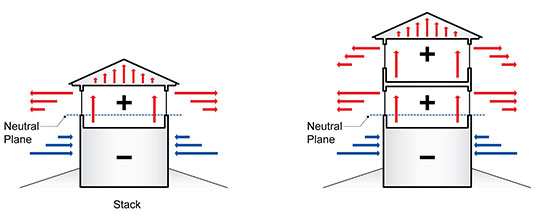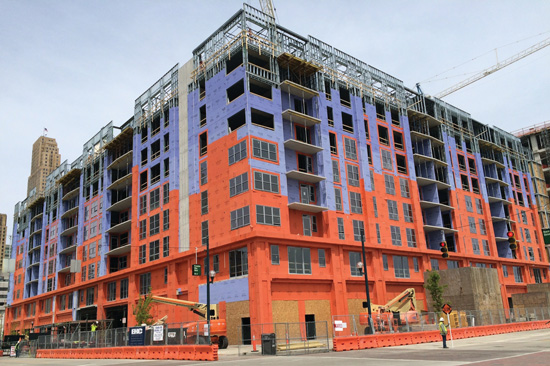Breaking Old Rules for Air-Barrier Installation
It is primarily the air-transported moisture that moves through the building’s envelope that is a problem.
When surfaces reach dew point, the vapor in the air or from vapor diffusion condenses, changing into liquid water. If this water is trapped in a wall, floor, or roof cavity and is not allowed to dry, it can, over time, cause problems. It not only degrades the building materials that are food sources for fungus, it also causes oxidations that will rust metal studs and other metallic wall components.
Ideally, a building envelope membrane is resistant to liquid water and air, but allows vapor to enter and exit, within certain bounds. Vapor movement is the rate at which water vapor can diffuse through a material, known as its water vapor transmission rate (WVTR) or water vapor permeance.
The permeance is measured in perms, where one perm is one grain of water per hour through 1 square foot of material, induced by a vapor pressure difference of 1 inch of mercury across the two surfaces of the material. Its driving force is a difference in vapor pressure, and its movement is always high to low. A high vapor pressure means that the number of water vapor molecules in the air is high. Vapor diffusion is different than air transport or convective vapor transport. And it is typically very slow.

Image courtesy of VaproShield
The stack effect brings in outside moisture and pollutants and adds to the work of the HVAC system.











